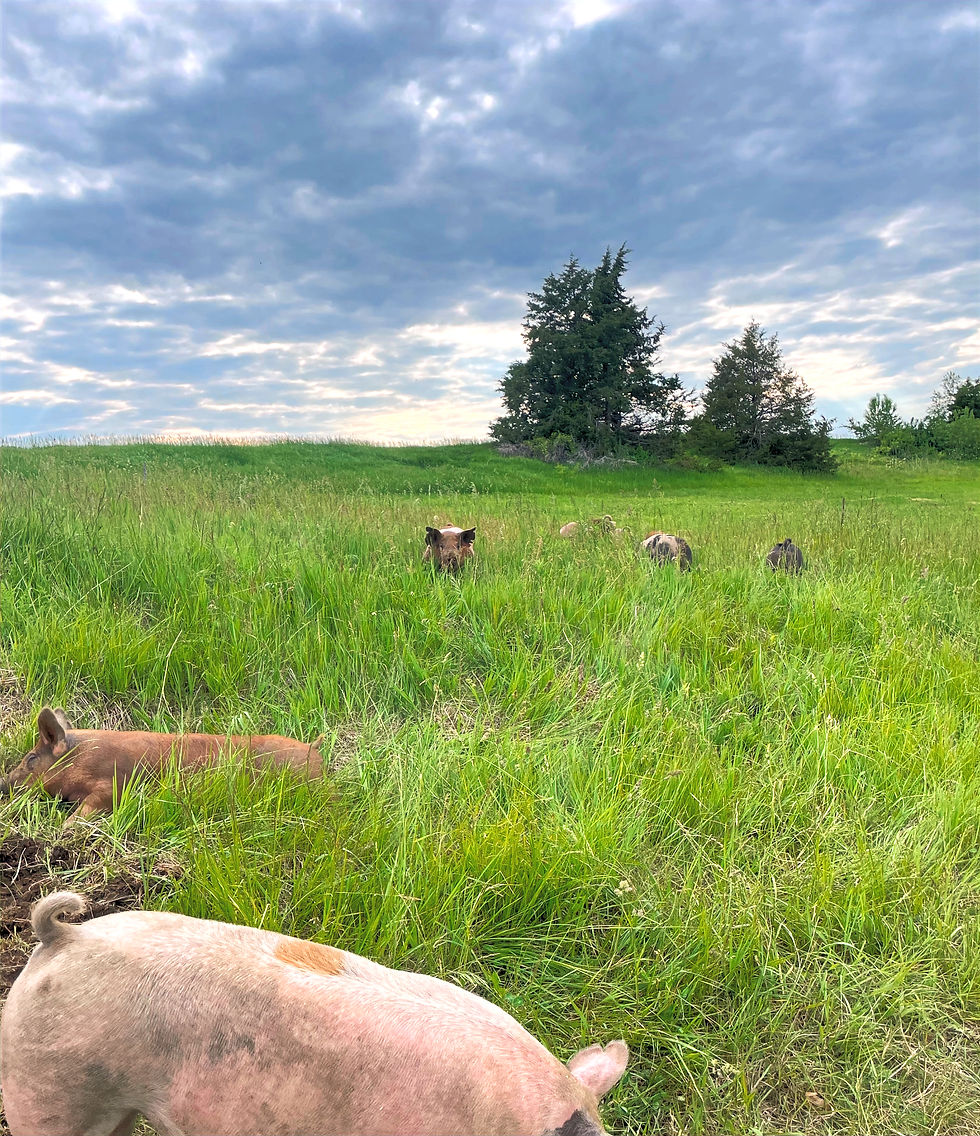Why We Raise Pigs the Way We Do at Flacco Land & Livestock
- Michael Flacco
- Aug 13
- 3 min read
When we first started preparing for pigs to come to the farm, we heard plenty of discouragement from others:
“Pigs are hard to keep in. They’re going to get out and tear something up.”“You don’t have the infrastructure or space for them.”“They smell and They’ll destroy the ground.”
The truth is—many of these challenges can be solved with intentional management. Raising pigs in a rotational pasture system addresses most of the issues people warned us about.
Pigs are special because they can take an unused, overgrown piece of land and make it productive. On our grandparents’ farm, we had areas of timber and heavy brush—thick grasses, brambles, and saplings—not suitable for cattle or other livestock, and it had sat unused for years. With their natural foraging and rooting behavior, thick skin, and tough nature, pigs turn that ground into opportunity. They find quality forage, eat down certain brush species, root up compacted spots, trample brambles, and leave behind more open, usable ground.
Over time, this transforms an overgrown, “unsuitable” plot into a higher-quality, manageable pasture. This process not only improves production for our pasture pigs but also opens the door for additional enterprises on the same land in the future—more on that later.
Our Pasture Layout and Rotation
Our pig pastures have a balanced mix of shaded timber and brush alongside forage-rich grasses and legumes. This variety lets us section off paddocks that offer pigs a range of food sources, rooting spots, and natural areas to explore.
That diversity is key to making pig management easier. When pigs have a new place to roam—fresh plants, shade, and even a few mudholes—they stay busy and content. A happy, well-fed pig has no reason to break out. They already have everything they need: food, water, shade, and room to explore.
We typically move pigs every 8–12 days, depending on forage availability and weather. We don’t have any permanent fencing—this reduces infrastructure costs and allows us to easily change paddock layouts. Regular moves reduce their impact on the ground and give each paddock a long rest period to heal and regenerate before pigs return the following year.
Rotating pigs also helps us avoid many health challenges. Fresh ground means fewer parasites, lower disease pressure, and cleaner living conditions. Combined with automatic waterers, free-choice feed, fresh forage, shade from the timber, and even natural springs, this system creates consistently healthy, content animals that truly enjoy where they live.
Why Pasture-Raised Matters
In addition to the improved quality of life for the animals, pasture-raised pork matters because it results in better nutrient balance and density for the meat we eat.
Thanks to their diverse diet, exposure to sunlight, and active lifestyle, pasture pigs are typically healthier and produce pork with superior flavor and nutritional value compared to conventionally raised animals.
As we discussed last week in our blog on nutrients, raising pigs on pasture helps improve the omega-3 to omega-6 ratio in the meat. This balance supports reduced inflammation, better heart health, and overall improved nutrition for the people enjoying it. It’s one more reason why we believe this system is worth the extra effort.
Integrating More Systems
As mentioned earlier, pigs have an incredible ability to take thick, brushy, “unusable” land and turn it into a perfect pig paradise. This transformation not only improves management in future years but also opens the door for expanding into other systems.
One example is turning timber into silvopasture—an integrated farming practice that combines trees, forage, and livestock in the same area to create a productive, sustainable environment. In our vision, cattle could graze ahead of the pigs, taking care of the bulk of the grass and broadleaf foraging, while pigs follow behind to work on tree nuts, roots, and brush.
Chickens could then follow the pigs, cleaning up any leftover feed, scratching through manure to spread it for better fertilization, and eating larvae and parasites—helping keep all animals healthier and cleaner.
Pigs are wonderful animals that provide countless opportunities for land improvement and farm diversity—but they’re just the beginning. Follow us as we continue to change, expand, and grow.
Want to taste the difference that comes from happy pigs and healthy land? Order pasture-raised pork for local pickup or delivery right here: Shop Now



Comments